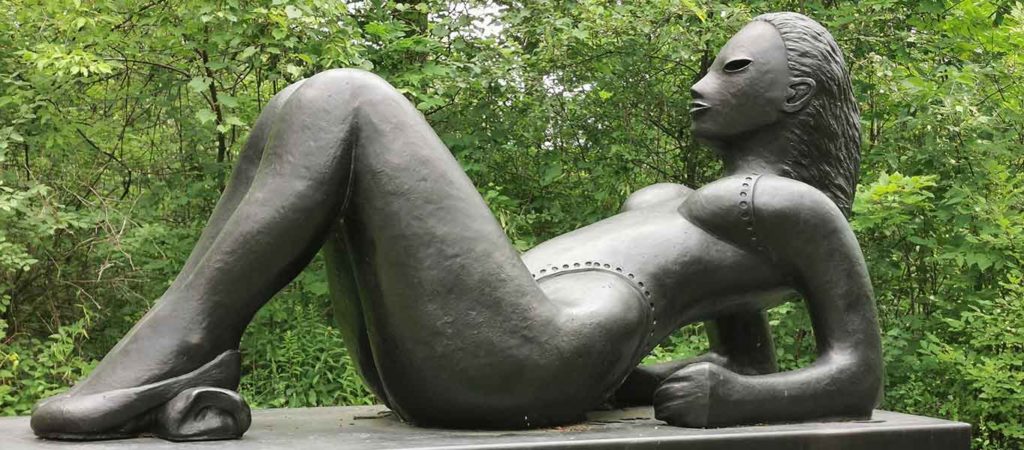By Wayne Doyle
It’s hard to believe but it’s true – when you look up quaint in the dictionary, a photo of Kleinburg, Ontario is nowhere to be seen. And that’s a shame because if any town in York Region has the potential to be named the quaintest, Kleinburg is it.
Turn-of-the-century lampposts line the quiet main street, baskets of flowers hanging from their tops. Brightly painted, impeccably detailed facades are festooned with bright and cheery flowers and massive fronds. Everywhere, folks stroll – there is no hurried pace in Kleinburg and one thinks the locals like it that way.
Strolling south from the village’s main hub, it’s about a five minute walk to the McMichael Canadian Art Collection, home to more than 6,500 artworks by Tom Thomson, the Group of Seven, their contemporaries and First Nations, Metis, Inuit and contemporary artists.
Rather than walk about the gallery, this trip focuses on the monumental works found in the McMichael Sculpture Garden – nine pieces by Ivan Eyre, a Canadian artist who is best known for his prairie landscapes and abstract, figurative paintings.
Born in Saskatchewan in 1935, Eyre donated the works to the McMichael 10 years ago. Each of the sculptures is two times life size.
‘The spectacular bronze sculptures by Ivan Eyre showcased in our new outdoor Sculpture Garden reflect the intrinsic relationship between art and nature,’ said Dr. Victoria Dickenson, McMichael Executive Director and CEO at the time of the donation. ‘How we view and think about landscape and our environment is at the core of the gallery’s mission.’
Seeing these works on location changes how the viewer interacts and reacts to them. If they were simply installed in an exhibit inside the gallery’s walls, the viewer would move around them and be suitably impressed – not only by their size but also by their technical virtuosity.
Outside, however, the works take on mythical status – you can imagine them awakening in this natural surrounding – the narrative of their creation echoing through the urban wilderness.
‘Each of the sculptures constitutes a meeting between thoughts of the distant past and an anticipation of the future. The monumental size of the bronzes enhances that idea,’ Eyre said when the works were installed.
While the walk is only a few hundred metres, you could spend an entire day here if you decide to slow down and engage with each of the sculptures – an interaction well worth the investment. Cast in bronze with a beautiful dark patina, the sculptures alone are worth the visit – the works inside the McMichael’s gallery walls are an added bonus.
Following your visit to the sculpture garden, take a leisurely walk north back to where you started and sample a few of Kleinburg’s most notable offerings.
Featuring a front porch with intimate tables for two, Balzac’s Coffee Roasters is a great place to relax, enjoy your favourite blend and chat away while doing a little people watching. A landmark heritage property, Balzac’s now stands on the site of what used to be the Arthur McNeil House.
If your tour of the sculpture garden has led to a case of the hungries, don’t worry, there a number of eateries in the village, from quick options like pizza and concession stand fare to casual dining.
With a covered patio and an authentic Italian menu, Belsito – named after the chef’s parents’ hometown of Belisto, in the province of Cosenza, Italy – is open for lunch (Thursday to Saturday) and dinner (Tuesday to Saturday).
Looking for ice-cream salvation on a hot afternoon? You’ve got two options – Cookie Crumble Cafe or Old Firehall Confectionery. Both are excellent and both are right on the main street. Old Firehall Confectionery is highly recommended for the sweet tooth that’s looking for something new.
* * *
Wayne Doyle is the manager of marketing and communications for the York Region Arts Council. A former journalist, Wayne is always looking for great stories to share with readers of experienceyorkregion.com. If you’ve got a York Region story to tell, contact Wayne: wayne@yorkregionartscouncil.com










